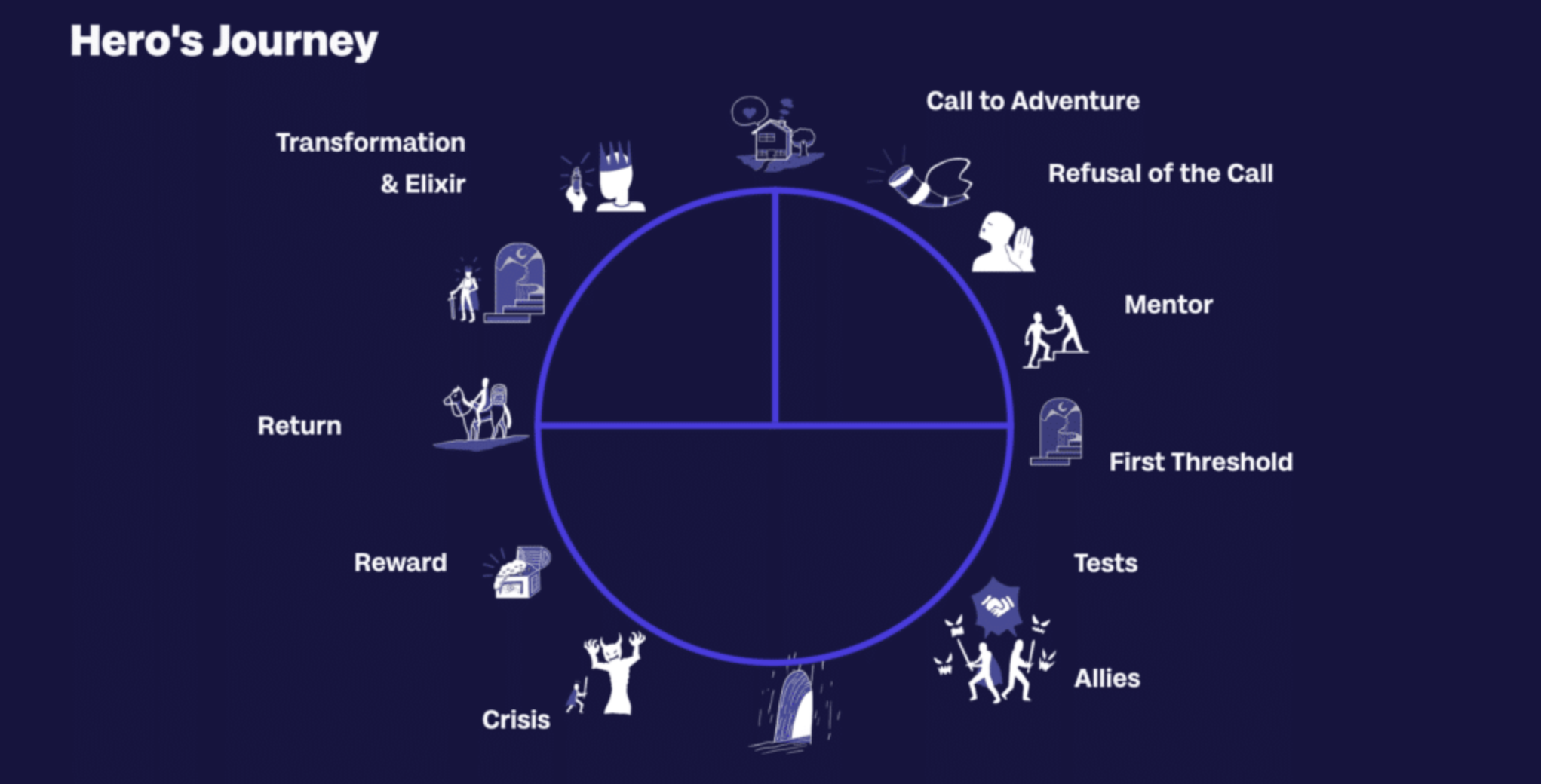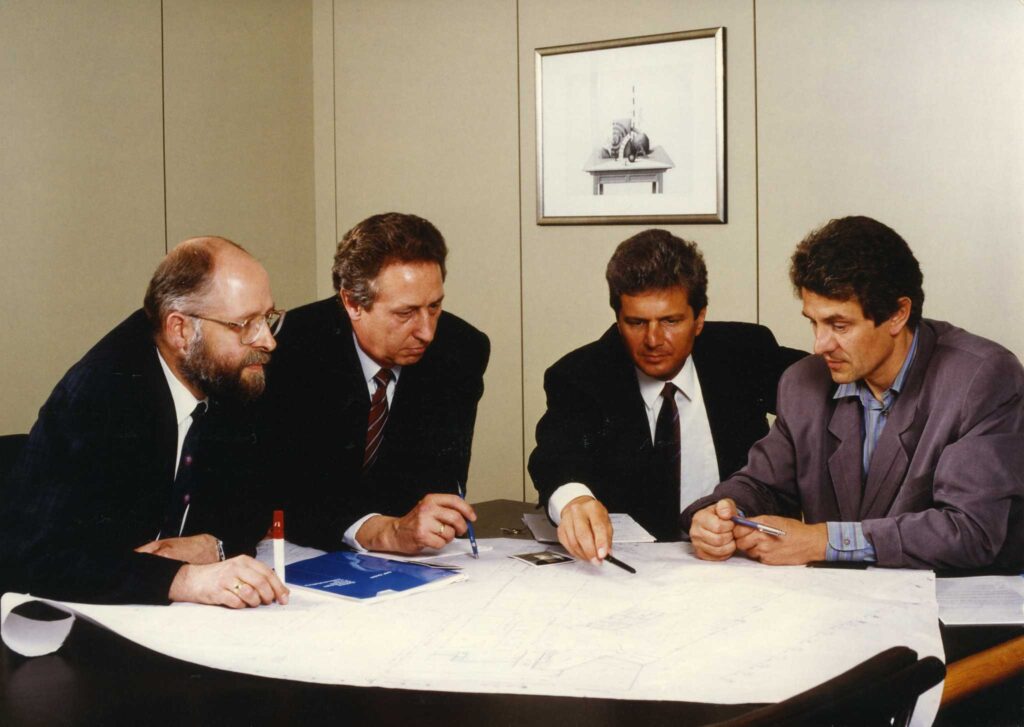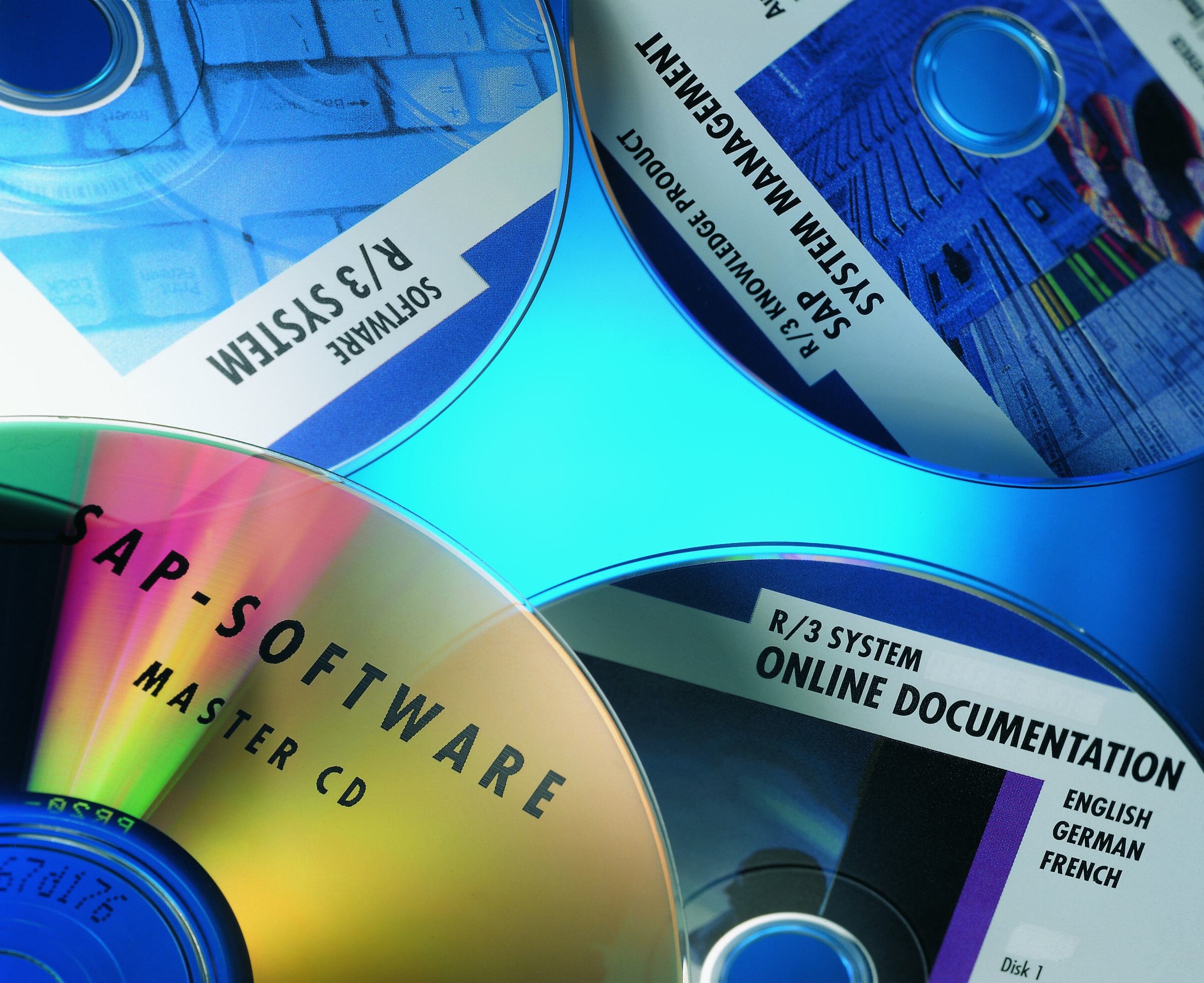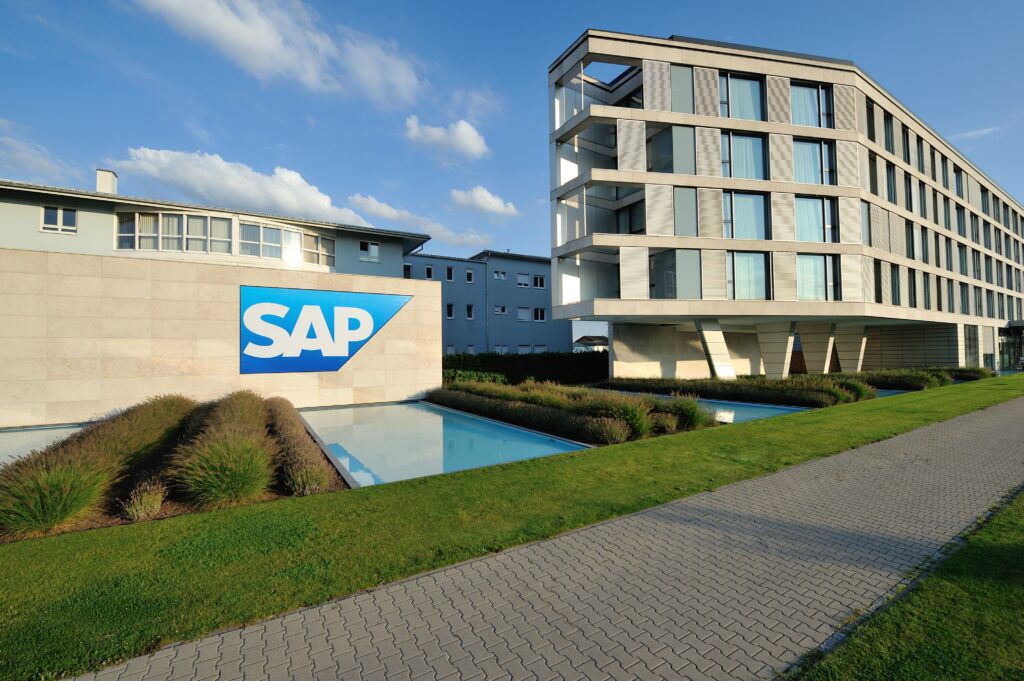SAP’s Hero’s Journey: From Electoral Palatinate Start-up to Global Market Leader
System, analysis, programme development – excuse me? Most people are probably familiar with the acronym SAP and the company of the same name. But what is the genius business model that catapulted the former start-up from southern Germany into the global market leader for business software? SAP has revolutionised the way B2B business is handled. But as always, there is no success story without setbacks. We trace the origins and development of the IT giant using the classic hero’s journey. Because there is enormous storytelling potential here.

The familiar world: challenge the analogue chaos
The situation in the late 1960s and early 1970s is unimaginable for us today: large companies operating in several countries used their own customised software solutions – from production to marketing to accounting. However, these systems did not interact with each other. When the production department needed to transfer their data to the finance team, this was often done by manual input or the exchange of paper documents. This led to inconsistencies, delays and a high potential for errors.
In the midst of this chaos, there was a group of visionaries who realised that there was a better way. The five former IBM employees Dietmar Hopp, Hasso Plattner, Claus Wellenreuther, Klaus Tschira and Hans-Werner Hector saw the potential of an integrated software solution that could cover all of a company’s business processes in real time. Their vision was to develop standard software that was flexible enough to fulfil the specific needs of each company, but at the same time was cost-effective and easy to implement.
No hero’s journey without a mentor: Investors believe in potential
The SAP founders knew they were breaking new ground with their idea. The existing systems and business processes were deeply rooted and many companies were reluctant to switch to new technologies. With little capital but a lot of determination and expertise, they began their work in a small office in Weinheim. They were supported by experienced entrepreneurs and early investors who believed in the founders’ potential. With their help, they succeeded in developing the first version of their software and gaining customers. It was a small but significant step on their hero’s journey.

The first test(s): Competitors and expansion
When SAP presented its first software solution SAP R/1, a real-time data processing system, in 1973, the first major success was not long in coming. But it also brought new challenges: the founders had to assert themselves against established competitors and gain the trust of the business world, which was sceptical of the young start-up.
With the SAP R/2 package, users were able to plan their resources such as finances, personnel and materials for the first time. The company thus began to tap into international markets. The move beyond Germany’s borders was a bold decision, but it proved to be the right one. SAP expanded into North America and quickly gained ground there.
Tests, allies and enemies: Bill Gates as a strategic partner
The 1980s and 1990s brought with them numerous challenges. Competition became tougher and technological changes required constant innovation. SAP had to constantly reinvent itself to stay ahead. The founders found strong allies in the shape of partner companies and a growing customer community. These alliances helped them to survive difficult times and continue to grow.
A key turning point in SAP’s heroic journey was the development and introduction of SAP R/3 in 1992, which was platform-independent and offered a more user-friendly interface. The changeover to this new solution was a huge challenge for SAP and its customers. However, the company mastered this task with flying colours – thanks in part to its collaboration with Microsoft – and consolidated its leading position in the market. SAP R/3 became the standard in many companies worldwide and made a significant contribution to growth.

The dotcom financial crisis: when the internet bubble burst
Between 1995 and 2000, the number of Internet users rose from 16 to 304 million. This increasing popularity led to a veritable website boom, which also had a noticeable effect on the stock market. Unfortunately, this euphoria came to a sobering end with the bursting of the so-called dotcom bubble, from which small and private investors emerged as the losers. This financial crisis also left its mark on SAP: in 2003, the founders struggled with losses for the first time in the company’s history.
What was needed was a new strategy. The software manufacturers reacted and reorganised their portfolios. Netweaver was an open integration platform, the first version of which was launched on the market in 2004. It made it possible to combine a wide variety of software services from other providers. However, customers – now 25,000 companies in 120 countries – struggled with the innovation. Many mourned the loss of the R/3 version, which they had first introduced at great expense, and feared the renewed changeover, which was associated with the purchase of new licences. But SAP management persevered.
Reward elixir: SAP as a global pioneer of digital transformation
Slowly but surely, sales rose again – not only because SAP lured its customers with discounts. In 2007, annual sales broke through the ten billion euro barrier for the first time. In addition to organic growth, the company also focussed on acquisitions of other companies. However, SAP did not rest on its laurels. The IT giant returned to its roots by continuously introducing innovations and integrating new technologies such as cloud computing, artificial intelligence and machine learning.
With the introduction of SAP S/4HANA, the company once again demonstrated its ability to evolve and shape the market. This new generation of software has enabled companies to organise their business processes even more efficiently and meet the challenges of digital transformation.

SAP’s hero’s journey results in global market leadership with a broad portfolio of software solutions. The company combines traditional values and expertise with modern technologies and remains a pioneer in digital transformation. Even in times of crisis, SAP has managed to maintain a balance between proven methods and innovative approaches, thereby securing its place at the forefront of the industry.
A player that also plays in the top league – although in a completely different industry – is Playmobil. You can find the inspiring hero’s journey of the classic toy here.
Share this article








